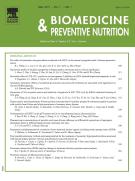Oleanolic acid inhibits cell growth and induces apoptosis in A375 melanoma cells - 30/05/14

Abstract |
Melanoma is a life threatening condition, which mostly effects cocassions despite the advancements in current chemotherapeutic techniques. The aim of present study is to investigate the apoptotic inducing potential of oleanolic acid (OA) in A375 human melanoma cells. The anti-proliferative effects of OA (12.5–200μM) were assessed by cell growth and XTT assay. The morphological and nuclear damage studies were carried out by Wright-Giemsa and DAPI staining, respectively. Further, the apoptotic inducing potential of OA in A375 cells were measured by DNA fragmentation ELISA. The results showed a dose-responsive effect of OA by inhibiting the cell growth significantly (P<0.05) at 24 and 48h with a decrease in cell viability (XTT data). The significant morphological changes included cellular annihilation, which was observed in A375 cells when compared to the control cells. Quantitative dose-dependent increase in apoptotic-DNA fragments in ELISA and nuclear fragments in DAPI results, further demonstrated the potential of this triterpenoid to induce apoptotic cell death at a concentration, particularly higher than 50μM. Thus, we conclude that OA has wielded both anti-proliferative and apoptotic inducing potentials against A375 melanoma cells and can be a better choice for its progression.
Le texte complet de cet article est disponible en PDF.Keywords : Oleanolic acid, Melanoma, Apoptosis, DNA fragmentation ELISA
Plan
Vol 4 - N° 2
P. 95-99 - avril 2014 Retour au numéroBienvenue sur EM-consulte, la référence des professionnels de santé.
L’accès au texte intégral de cet article nécessite un abonnement.
Déjà abonné à cette revue ?

